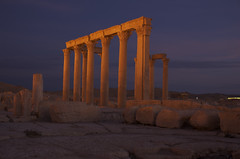Three days in Salt Lake reminded me of what I love about this place and why I was happy to leave. My first morning run was like time travel. I was experiencing the city as I had 20 years ago. The things that struck me when I first arrived struck me again. A lot has changed in these years, but a lot has also stayed the same. A place cannot shake off its character, no matter how many new buildings try to hide the old.
The Salt Lake Valley is a high desert. Arriving through canyons in the Wasatch Mountains, the first settlers declared it to be the place of their dreams. Little did they know, and the first years must have been a huge disappointment of constant toil, but they turned the place around and made it hospitable.
Life is dependent on water from snowmelt and meager streams, a scarce resource that is dispensed to abandon to keep parks and front lawns green and trees strong. Landscaping is as important as it is in the rest of the US. When I used to live here, anything but Kentucky Blue was frowned upon. Now creativity has noticeably increased, with native plants, dry yards, and wildly sprouting sunflowers.
There's an incredible sense of spaciousness. Mountains border the valley to the east and, almost invisible in the haze, to the west, but the north and south are wide open. Single-story homes and surface-level parking lots don't block the view. This is the wide west.
The streets are wide and there's no traffic. Very few cars are visible, whether moving or parked. This is true for most residential streets. In stark contrast, the big through-streets that pump commuters into town from the suburbs are avalanches of metal.
Despite the best efforts of UTA Rideshare, whose 2004 t-shirt I continue to wear, few ride bicycles, though it's more than when I lived here. The fault line with its brutal gradient and the unforgiving heat in summer and the snow in winter conspire to keep the numbers down. Only the most committed cyclists will commute by bike here. E-bikes would help, but I didn't see many. Instead, lime green electric scooters roost in unexpected corners, waiting to be picked up, ridden for a small fee and discarded. Their range is probably limited.
Fewer yet than cyclists are pedestrians. Salt Lake is not walkable. The blocks are large and people (living in single-family homes for the most part) sparse. There are a few bus lines, and light rail has been extended to the airport, but you still need a car to go almost anywhere.
Many streets and many more sidewalks are made from concrete. Water seeps into the gaps between the individual slaps, freezes in winter, and crumbles the material to dust. Roots of trees push from below. The result is an obstacle course of canted slabs. Few care because few walk.
Driving is relaxed. At four-way stops, no one forces their way. Sometimes, no one takes the initiative, either, and for a while four cars sit idly waiting for one other to make the first move.
The campus of the University of Utah is a thing of beauty. Sitting on the slopes above the valley, it offers stunning views into the haze. Imagine this after rain has cleared the air. Campus is the place that has most changed since I last saw it. A handful of big new buildings at the southern rim of campus have displaced the football fields where I used to play. The dorms where I spent me first year wanting to leave had to make way for an athletic center and softball stadium. Good riddance. Only the parking lot remains.
Return missionaries are enthusiastically welcomed at the airport, with balloons, cheers, extended families and "Welcome home, Elder Berry" signs. When I first arrived in the US, these celebrations took place at the gate. One would frequently have to jostle through crowds blinded by religious devotion. Now these parties take place in the arrivals hall, one of the few positive aspects of the security theatre.

No comments:
Post a Comment